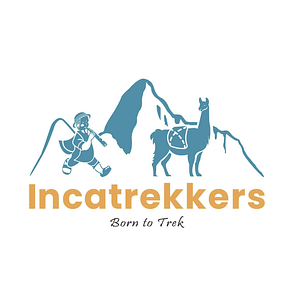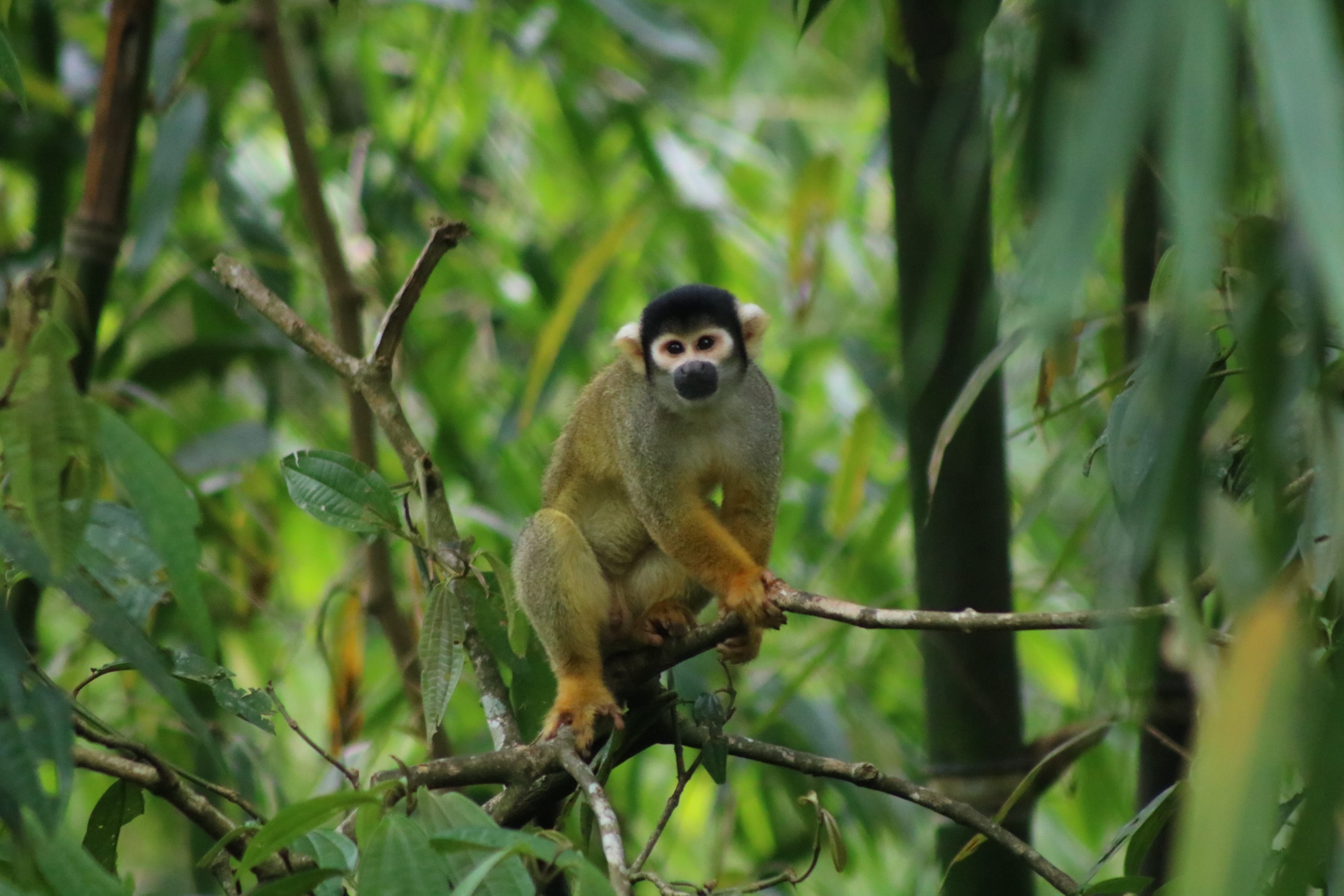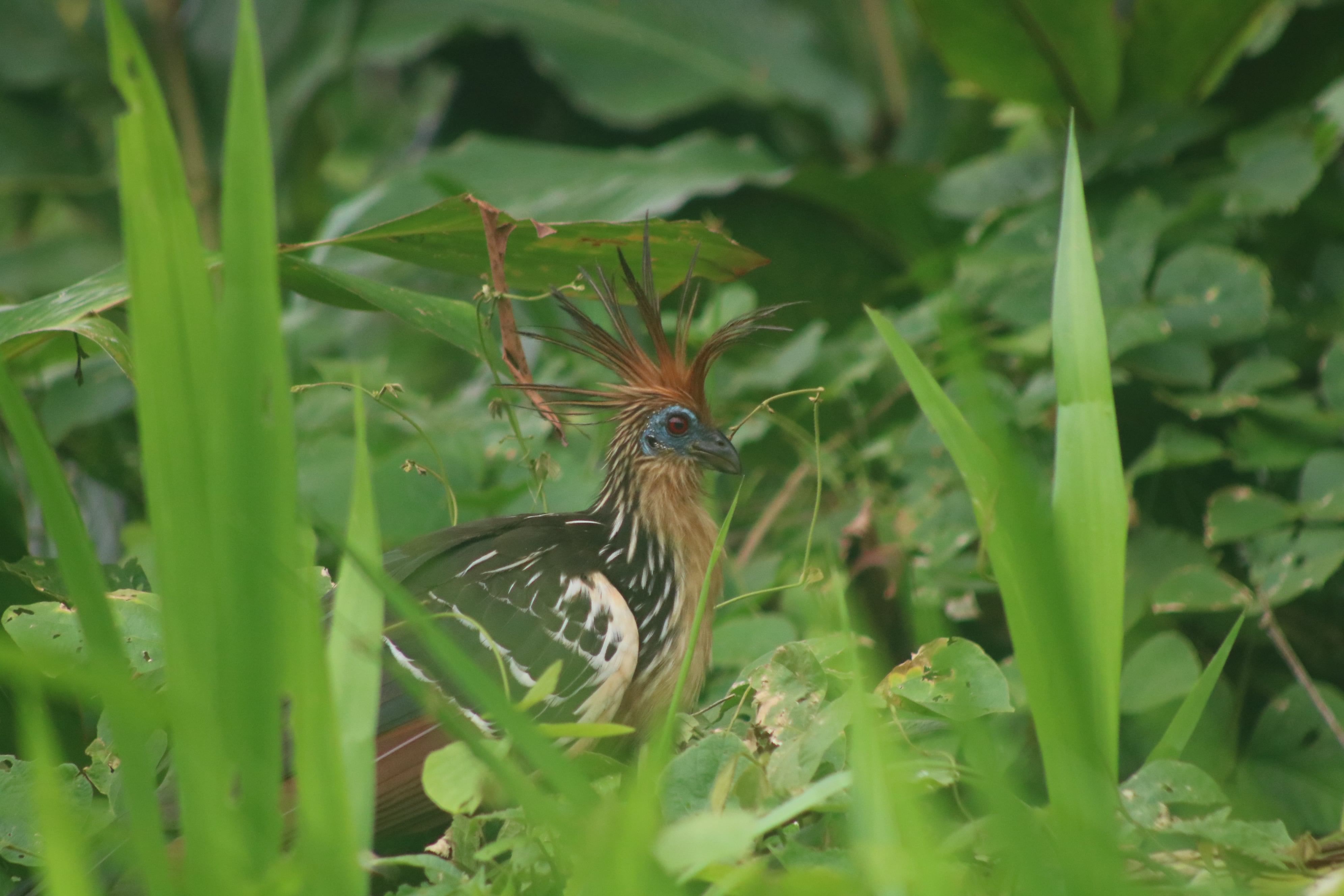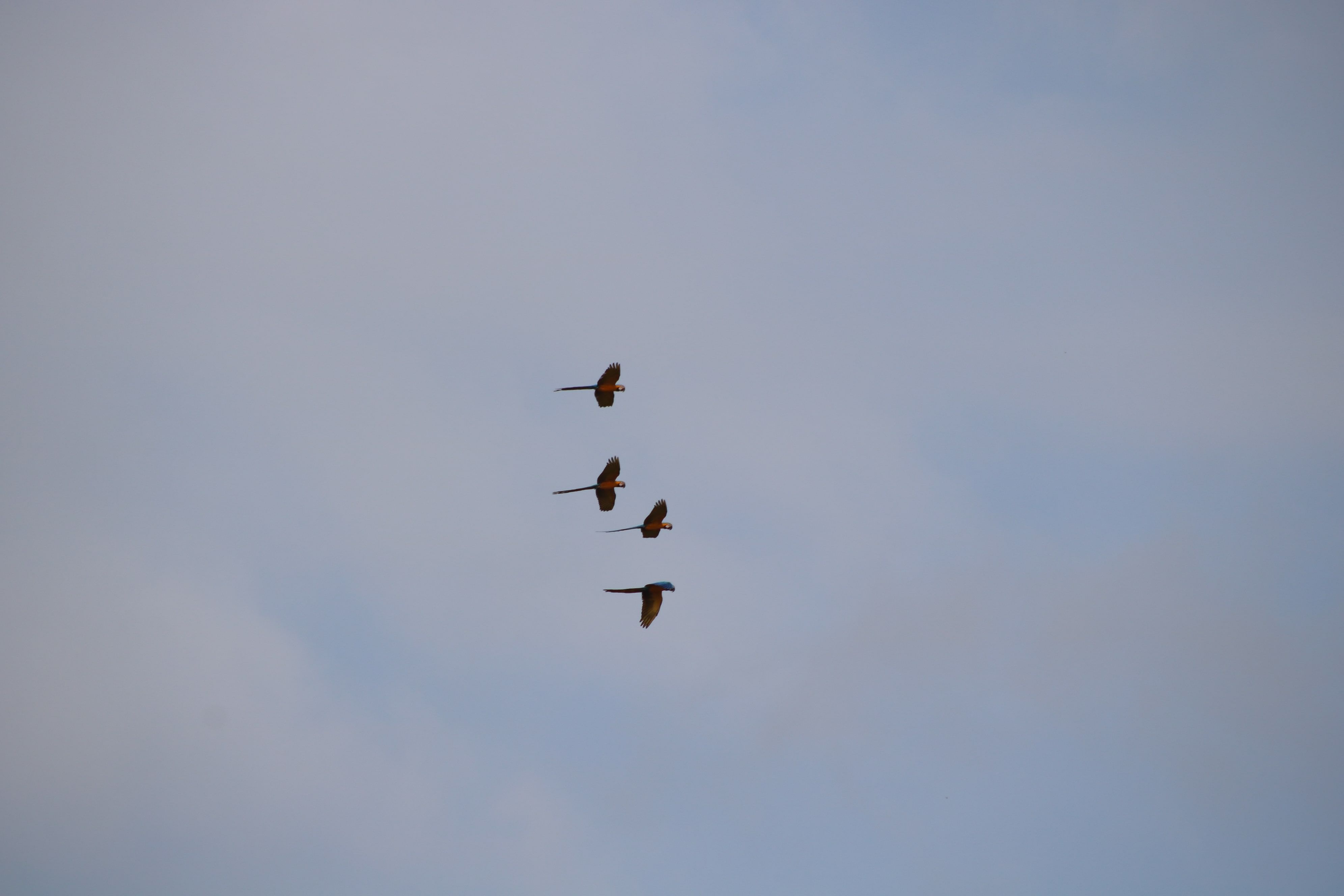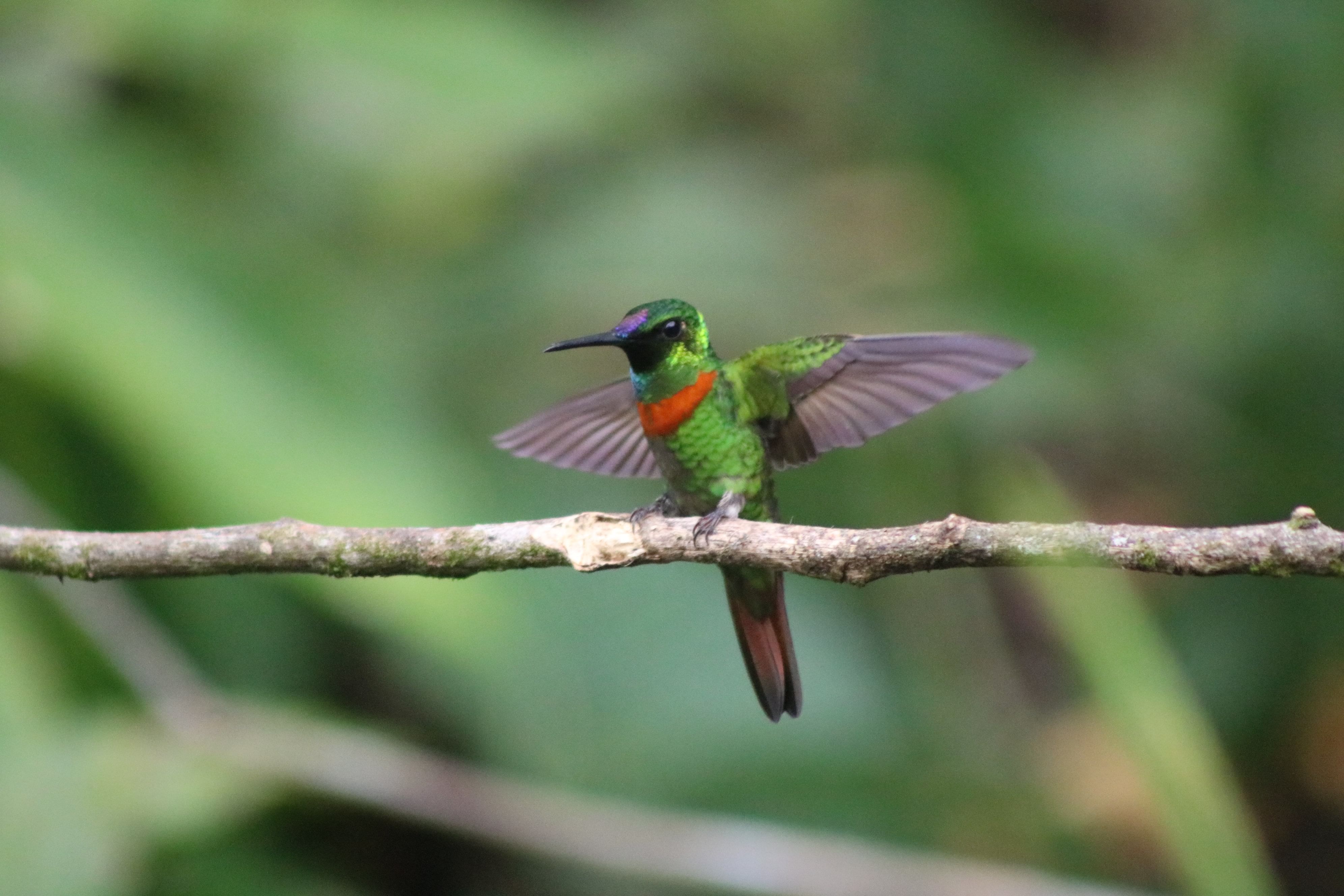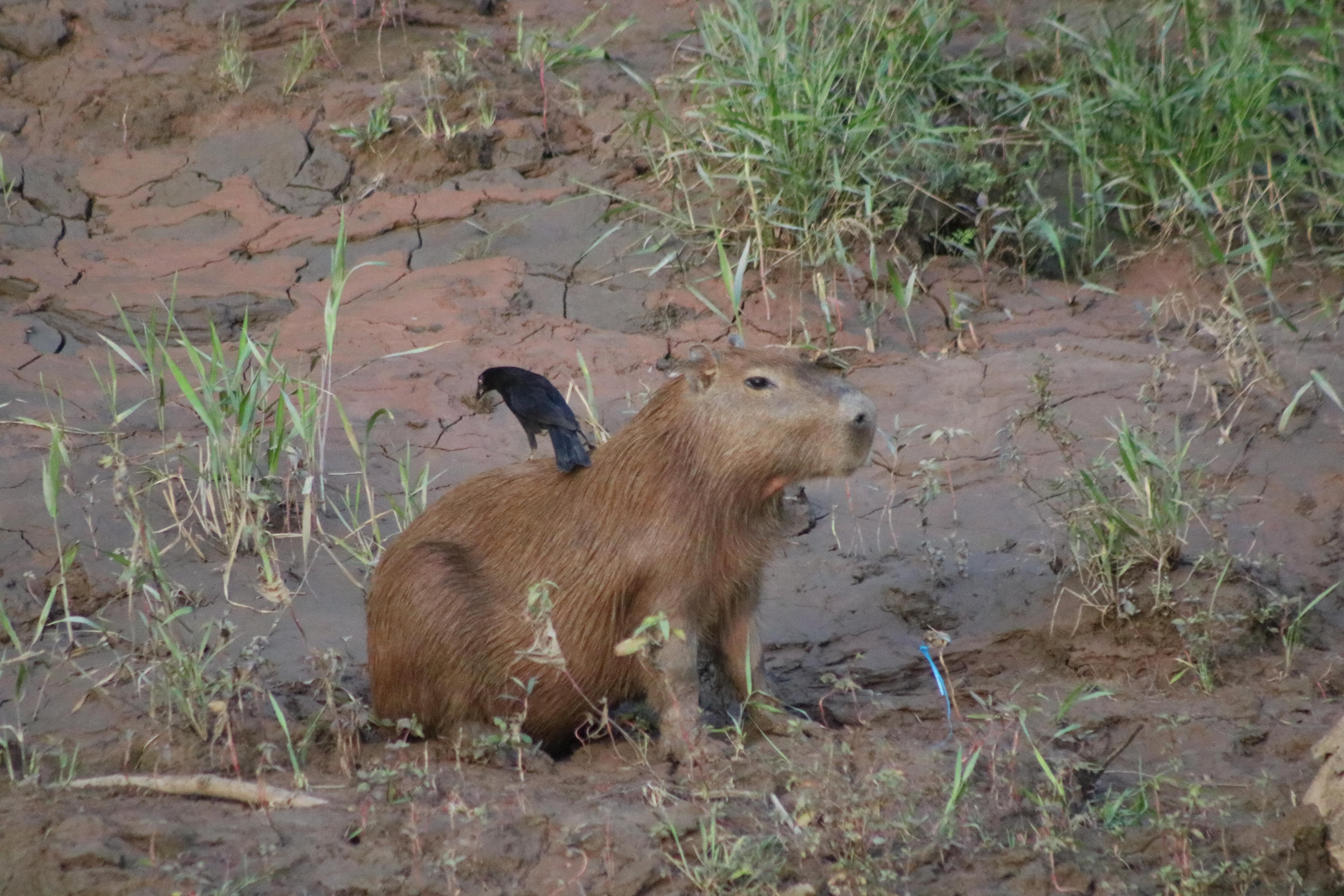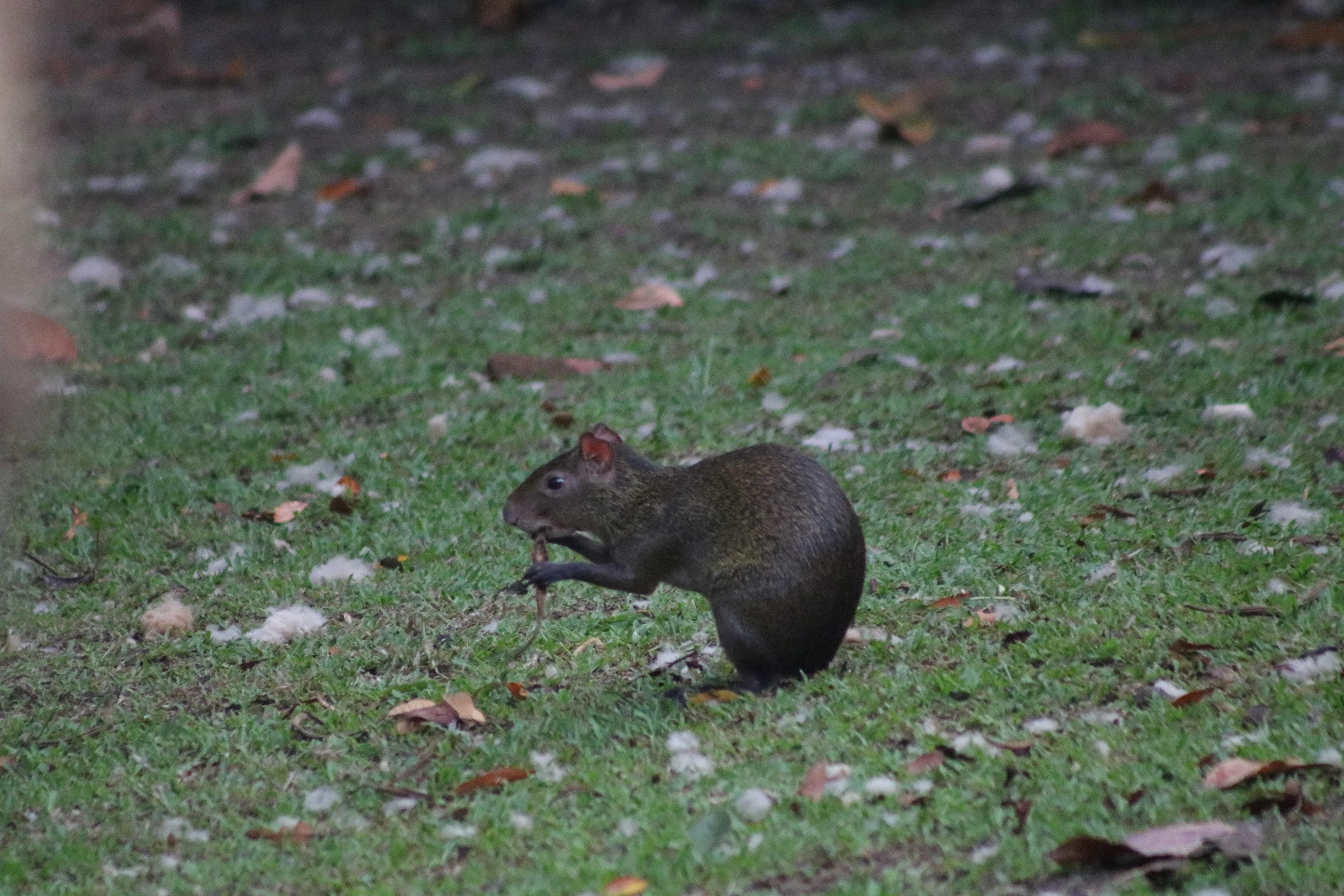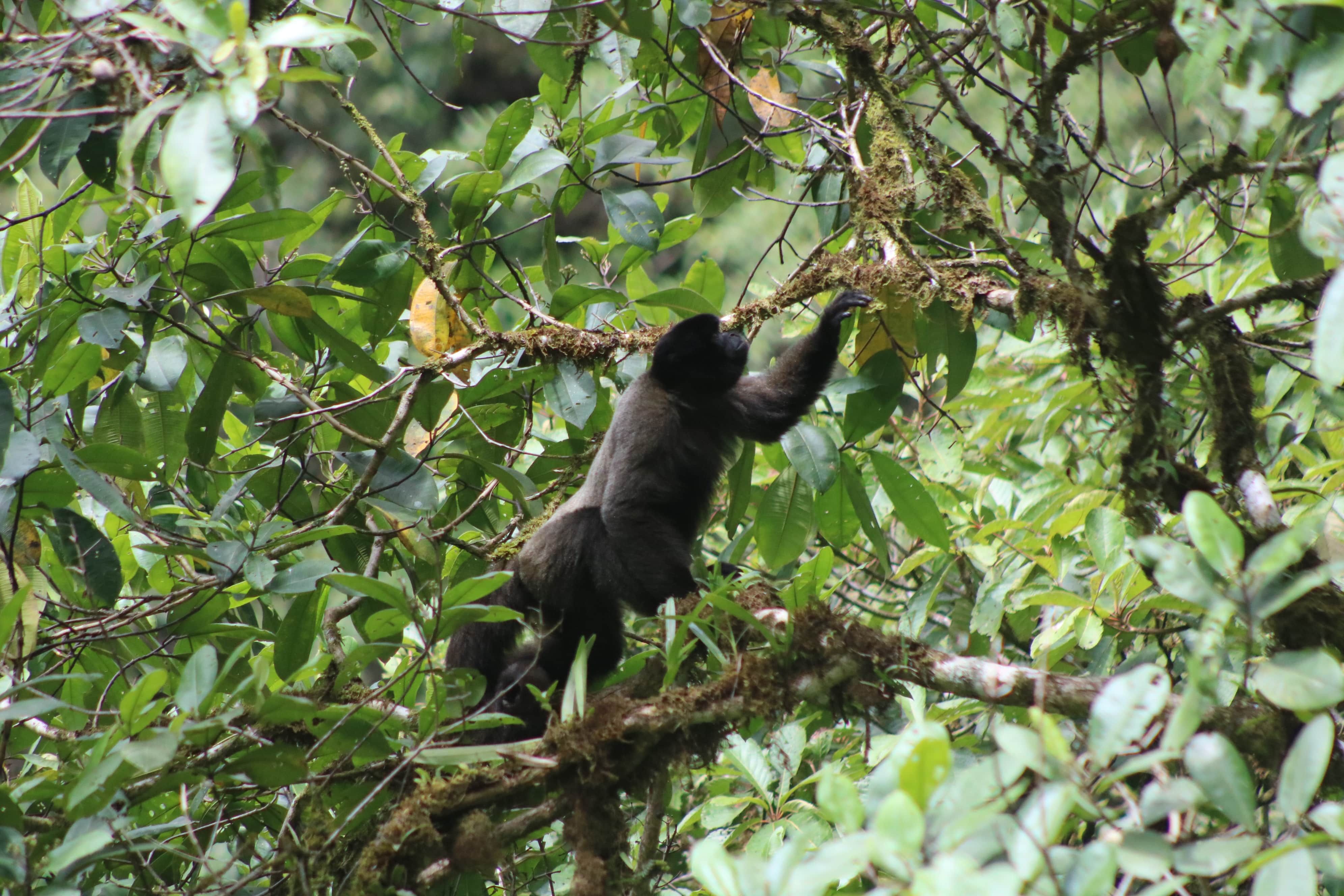Manu Cloud Forest 5D/4N
5-Day tour to Manu Natinal Park
The Cock-of-the-Rock Lodge is located at 1600m/5200ft elevation in the Kosñipata Valley, 165km/102 miles by road from Cusco, and situated within the 5,060ha/12,500-acre cloud forest reserve of the conservation group Peru Verde. We take just 7 to 8 hours by bus from Cusco to reach the peace and simple comfort of this lodge -- although many groups are so enthralled by the magical diversity of what the world's leading bird tour company has called "the best road in the world", that they spend a bit longer.
It has 12 comfortable, double-occupancy bungalows, with hot showers, flush toilets and private balconies overlooking the cloud forest. Just 10 minutes by car from the lodge, the world's largest, most accessible and tamest known group of displaying Andean Cocks-of-the-Rock awe and delight visitors with their twice-daily courting antics.
Itinerary
Day 1: Cusco to Cock-of-the-Rock Lodge. - Our overland journey begins at 3,400m/11,150 ft, with an early departure from the highland city of Cusco. Today’s destination is the lush cloud forest region where the Andes fall away to the Amazon basin. This is a day of scenic drama and striking contrasts. We first visit a mountain wetland habitat teeming with migrant and local waterfowl, before crossing two mountain ranges between the Cusco valley and the Paucartambo valley, to a maximum altitude of 3,900m/12,790ft. Finally, we follow a sinuous ribbon of highway on its plunge through an extraordinary world of forested cliffs, waterfalls and gorges. We take leisurely stops to see mountain villages, a hilltop necropolis of chullpas (pre-Inca burial chambers), and the abrupt ridge top of Ajanaco, which marks the final high point where the Andes begin their swoop into the Amazon basin. In clear weather we will see a breathtaking panorama of cloud forest and mountain giving way to the lowland rainforest plains far below us.
After a lunch we descend through the startling and rapid environmental transformations characteristic of the tropical Andes, passing from grassland and stunted trees through elfin forest, until we wind through a lush and magical world of overhanging trees, giant ferns, monster begonias, countless orchids and bromeliads, and a diverse and teeming birdlife.
We make frequent spontaneous stops, perhaps spotting a brilliantly feathered quetzal, a trogon, or the wild turkey-like Guan. We reach the comfortable Cock-of-the-Rock Lodge. (Box Lunch, D)
Day 2: Cock-of-the-Rock Lodge: Along the road and trails. - In the early morning, we have a chance to view the Cock-of-the-Rock in full, raucous courting display. This lek and its observation blind are famous among birders, since nowhere else on the planet allows so many of these spectacular blazing red birds to be seen so easily. (Note that the very best months for viewing Cocks-of-the-Rock are in September, October and November, although the males display throughout the year.) Afterwards we can stroll along the clearing formed by the nearby road, spotting other birds, and with luck some Brown Capuchin or Woolly Monkeys .
After a hearty breakfast we can explore the forest overhanging the gravel road near the lodge, or some of the miles of trails that wind through the valley, to see high elevation cloud forest birds. This is a relaxed and enchanting day. As we amble among the woods and waterfalls we can marvel at the extraordinary variety of orchids, bromeliads, ferns, begonias, lichens and mosses -- and we also have a chance of sighting Woolly and/or Brown capuchin monkeys. Along the way we may encounter some of the most colorful denizens of the cloud forest, such as the brilliant Golden-headed Quetzal, Gray-breasted Mountain Toucan, Blue-crowned Motmot, Umbrella Bird, Blue-banded Toucanet, fruit-eating tanagers, Red-crested Cotinga, Banded-tail Fruit-eater, and a variety of flycatchers.
In the afternoon we can relax at the lodge, enjoying the dining hall viewing platform, or our private forest-overlook balcony. (B, L, D)
Day 3: Cock of the Rock Lodge to Villa Carmen Biological Station. - After an early breakfast we set off Our journey continues by ground transport to the mid-elevation forest and to witness how the last Andean foothills yield to the vast Amazon basin.
Upon arrival we will spend the rest of the afternoon walking mid-elevation rainforest trails in the company of our guide at Villa Carmen Biological Station.
Villa Carmen Biological Station is located on over 7,500 acres of land within the spectacular Manu Biosphere Reserve in Southern Peru. Spanning an elevational gradient of 1,700 to almost 4,000 feet above sea level, Villa Carmen hosts an incredible array of species found in a variety of habitats, ranging from cloud forest to montane and lowland rainforest.
The station supports a wide variety of habitats including old-growth rainforest, lower mountain forest, secondary forests, streams, rivers, waterfalls, and a highly diverse flora and fauna.
We will relax at the Lodge in the late afternoon. (B, L, D)
Day 4: Villa Carmen Biological Station – mid-elevation rainforest. - After breakfast we set off Our journey continues to Atalaya road and to be witness how the last Andean foothills yield to the vast Amazon basin.
This type of habitat is very special as several upland and lowland species of birds mingle at this elevation, we may have the chance to spot exotic species of birds like the Mask-Crimson, Blue-gray and Paradise Tanagers, the Blue Crowned Trogon, Blue headed Parrot, the Blue-headed Macaw, the Bluish fronted Jacamar, Military Macaw and endangered species of parrot that lives only at this elevation. On the way we will make stops at the hummingbird gardens where we will be able to appreciate many hummingbirds, woodpeckers, barbets, macaws or perhaps we will see some monkeys.
We will return to the Lodge in the late afternoon. (B, L, D)
Day 5: Villa Carmen Biological Station – Departure Day. - After an early breakfast we set off mid-elevation rainforest and the cloud forest highway, pausing here and there to alight and stroll in search of more birds: ones we have already seen, but are too spectacular to ignore, and birds we are seeing for the first time. Or perhaps we will glimpse monkeys that have so far eluded us. We wind our way through the enchanted mountain landscape on our route back to Cusco, knowing that the memory of this will remain with us for years to come. (B, Box Lunch)
Important notes: Please note that the program may vary slightly so as to maximize your wildlife sightings, depending on the reports of our researchers and experienced naturalist guides based at the lodge.
PRE-DEPARTURE INFORMATION
Manu - the World’s Greatest Rainforest Destination
Manu, the name has acquired a legendary mystique among birdwatchers, naturalists, and conservationists throughout the world. No other park on the planet protects so many bird species, so many plants and animals, as this outstanding wilderness area, only 20% of the entire Amazon has the rich floodplain soils that yield abundant rainforest fruits and support dense populations of forest wildlife of that area. These are the qualities that have earned Manu its fabled reputation as the jewel in the crown of Amazon wildlife viewing experiences, and for those who choose to take the land route into Manu, the park offers even more - a vast span of stark mountain and high altitude cloud forest that covers the entire spectrum of contrasting natural environments and wildlife, all the way from the high Andes to the Amazonian lowlands.
WEATHER CONDITIONS
Rainfall in the Manu Lowlands is around 2500-3500 millimeters/98-138 inches per year, with most rainfall occurring in the rainy season months from November to April. The average temperature in the Manu lowlands is 28°C (82°F), with daily highs of 34°C (93°F) and nightly lows of 22°C (72°F). During the dry season cold fronts from the South Atlantic (friajes) occur once every month or so, with daily temperatures dropping to 15°C (59°F) and nightly temperatures to 13°F (55°F). In the Manu Cloud Forest there is an annual rainfall of approximately 5000 millimeters/196 inches per year. The average temperature is 24°C (75°F), with daily highs of up to 29°C (84°F) and nightly lows of 11°C (52°F).
ABOUT LODGES:
Cock-of-the-Rock Lodge. - is located in the pristine Manu cloud forest on the verdant eastern slopes of the Andes. Opened in 1997, it is named after the Andean Cock-of-the-Rock (Rupicola peruviana), Peru’s large, bright-red national bird that puts on a colorful, noisy mating display adjacent to the lodge every morning. Spectacled Bears, Woolly Monkeys, Brown Capuchin Monkeys, quetzals and a host of other colorful birds inhabit the surrounding forest, and a bubbling mountain stream tumbles past the lodge, situated at an elevation of 5000 feet (1600 meters) in the cool, mosquito-free Kosñipata Valley close to the wild Cusco–Shintuya road, the lodge protects and supports a 12,500-acre private cloud forest reserve. It consists of 10 double-occupancy bungalows with private bath facilities, and a separate complex with a large dining room, a local highland family staffs the lodge, and they also work as rangers, patrolling the private reserve.
Villa Carmen Lodge. - The 7,600-acre property is located in the buffer zone of Manu National Park, and boasts over 25 miles of trails spanning a wide variety of habitats, including old-growth rainforest, lower montane forest, secondary forest, bamboo, streams, rivers and waterfalls.
The station also neighbors several indigenous Wachiperi and Machiguenga communities as well as the Haramba Queros Wachiperi Conservation Concession.
Villa Carmen have six brand new cabins with floor-to-ceiling screened windows. Each cabin features comfortable beds (your choice of single or double) with mosquito nets, two Adirondack chairs, a luggage and clothes rack, electricity 24 hours and a luxurious private bathroom. A brand-new dining room, lounge, and bar welcome you for meals and provide comfortable seating for reviewing your lists at the end of the day.


